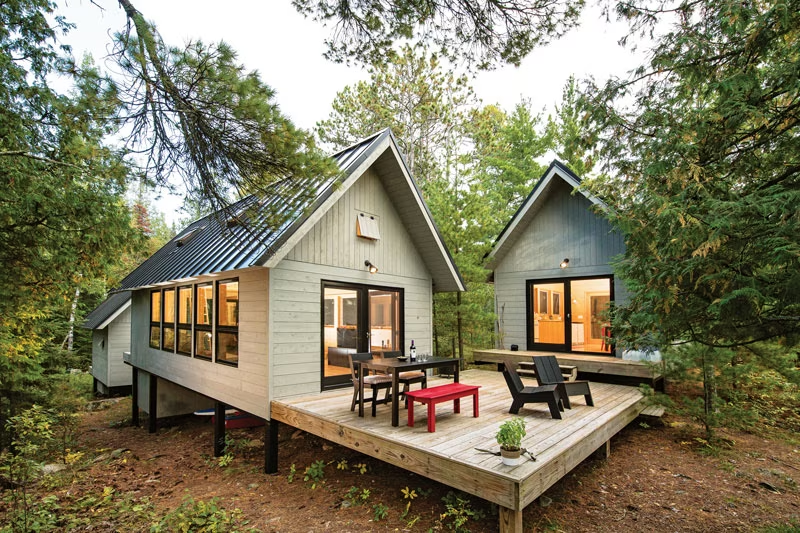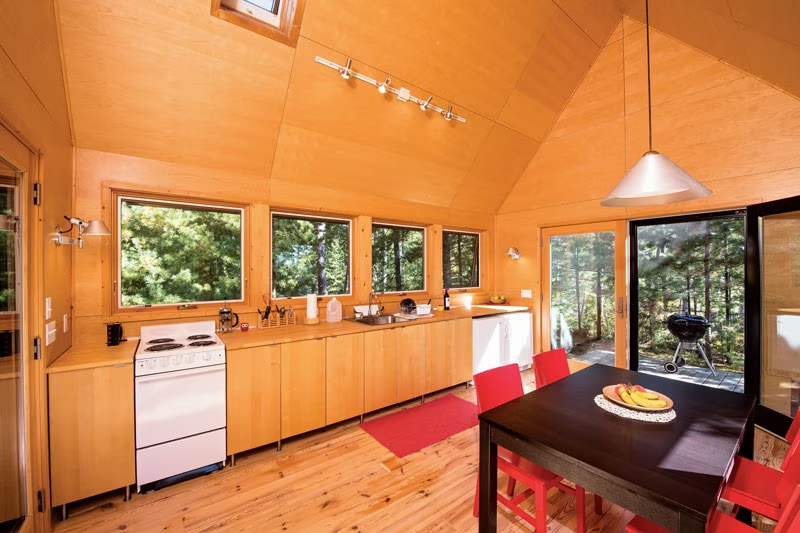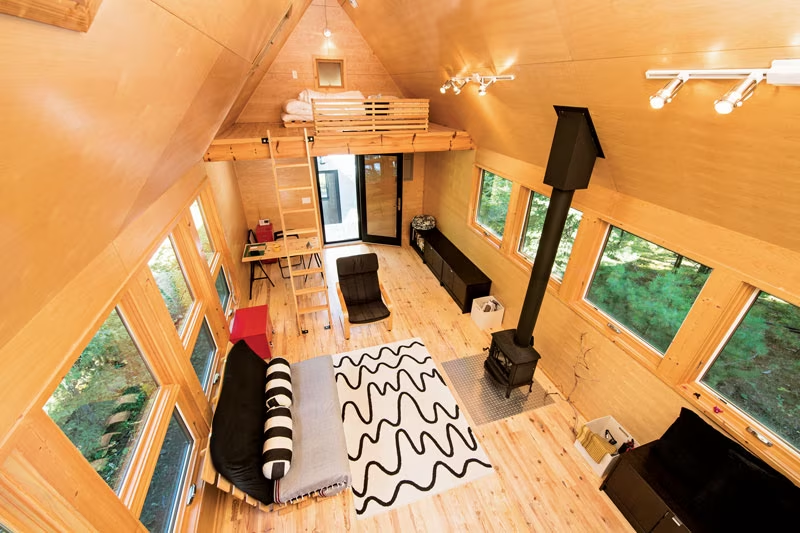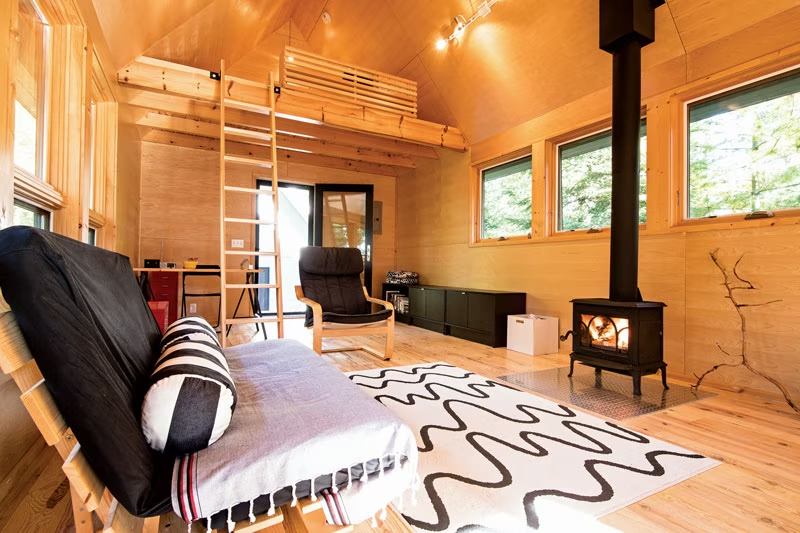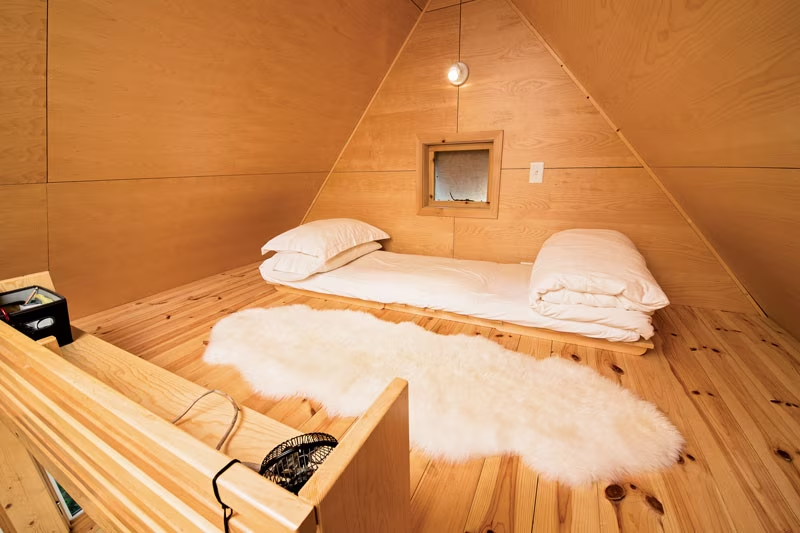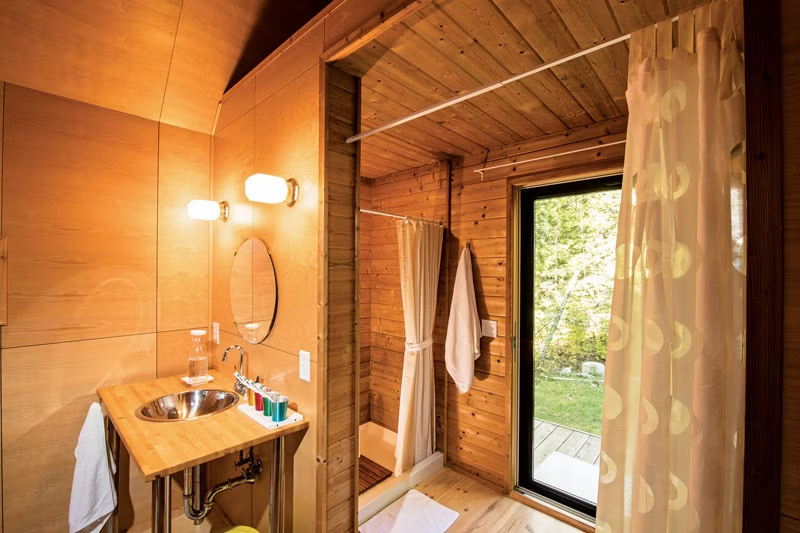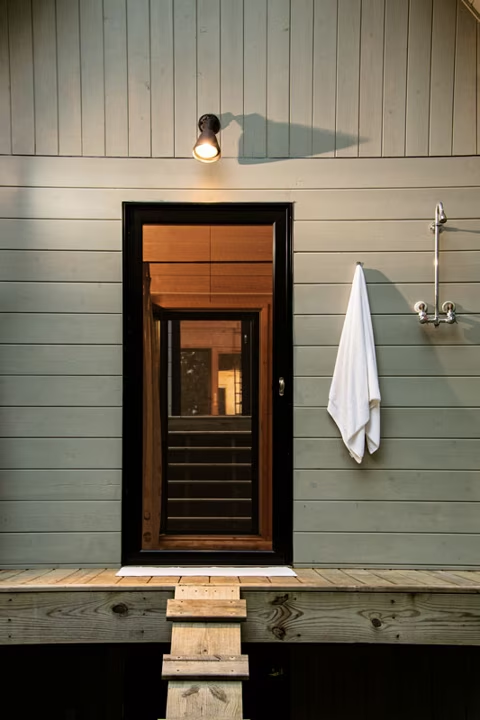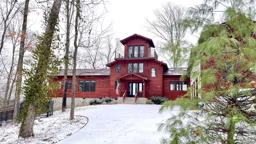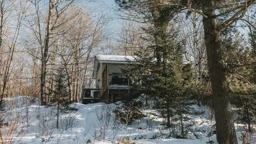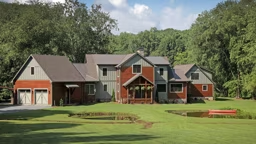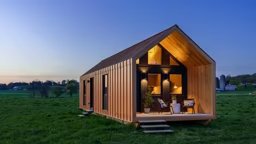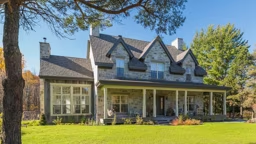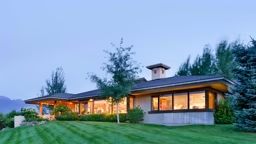Story by Michael Paulsen
Photos by Jack Rendulich Photography
We had been looking for an opportunity to build or buy a cabin for some time. Our various exploratory trips gradually led us farther and farther north – and further and further away from familiar city life in Minneapolis. We soon discovered that land on an island was twice as interesting and half as expensive (and about half as mosquito-infested!) as land on shore.
Building on an island hadn’t been part of the original plan. But there we were – on a beautiful, craggy point in a quiet cove on an island, accessible only by boat, in extreme northern Minnesota. Five hours north of our home in Minneapolis, “Ely Island” (pronounced “Ee-lee”), on beautiful Lake Vermilion, has become our treasured family summer escape. The lake and land are glorious and largely unspoiled – rocky and wooded, with eagles, owls and loons inhabiting coves, landings and perches.
So we decided to take the plunge. That summer, back in 2004, we bought a small parcel from the owners “next door” in the adjacent cove. At the time, our kids were truly kids – Luke was 12, and Caroline was 6 years old. (Now adults, they grew up spending summers on the Island.) We started gradually: The following spring, we added the barest essentials – a dock in our cove and a 15-foot motorboat to get us to the island from the local marina. We camped for three summers on our land – no facilities, bathing in the lake, cooking over a small camp stove – all the while dreaming, planning and building our island cabin. My wife, Kristen, an architect and studio instructor at the University of Minnesota College of Design, designed for our family a truly unique – simple, clean, modern – cabin consisting of three small rooms, each constructed as a separate structure atop steel piers and connected one to the next by glass doors and outdoor decks. (One of the builders compared it to a series of tree houses!) With around 800 square feet of indoor space, the structures themselves are small, but the openness and outdoor deck spaces let the cabin live large.
The Three Cabins
Perched on the highest point of the land is what we call the Kitchen House. It has French doors on each end and full banks of windows on either side, affording magnificent views of the lake to the west and forest to the east. The grilling deck and a rocky perch lie at one end; the main living deck is on the other, connecting the kitchen to the Bunk House where we hang out, play games and all sleep. (The kids have small lofts on either end; the parents sleep on a fold-out futon in the main room.)
The Bunk House, which is perpendicular to the kitchen and set back into the downward slope of the land, has large windows running the full length of each side and glass doors on the ends, offering maximum views, light and air. An outdoor stairway negotiates the land’s descent and connects the Bunk House to the third building, dubbed the Wash House.
Not to be mistaken for a typical northern Minnesota outhouse, the Wash House doubles as a dressing room for all and sports a cozy, thermally treated wood shower inside. For the fearless, an unscreened outdoor shower lies just out the back door on a raised deck looking out to the woods. Deer occasionally interrupt the privacy when they venture near to munch wild blueberries.

Unique Challenges of Building on an Island
Building a cabin on island property is a challenge in many respects, but each constraint can yield an elegant solution. Workers in northern Minnesota are accustomed to negotiating the lake in order to build on remote properties. Contractors, carpenters, dock-builders, plumbers and electricians easily shuttle back and forth in motorboats from the county park just a ten-minute boat ride from the island.
Carl, one of the local barge operators, hauled major building materials and construction equipment to our cove on his open barge – quite a sight! Barging costs are high, so we planned carefully to minimize trips: one for light excavation and septic, plus two more for the building process itself. A narrow construction path from our cove to the building site provided the route for a small skid steer loader to haul most of the materials.
An island parcel doesn’t come with the typical city infrastructure for utilities. A simple lake-pump filtration system provides our cleaning and bathing water. We haul our drinking water by boat from a well onshore. Electric power lines already ran to Ely Island under the water, and it was a straightforward matter of extending lines to our land. Each new property owner must ensure that wastewater and septic are handled according to code. We chose an Irish peat moss bio-filter system, enabling a smaller, cleaner footprint on the woods behind the cabin and producing far less impact on land and nature.

Living at an Island Cabin
We get our drinking water from a well at a nearby state park, a quick 10-minute boat ride away. Our bathing and other wash water is pumped from the lake and filtered to eliminate odors and sediment. The plumbing connects to our strangely pleasing Irish peat moss bio-filter system, which minimizes the impact on the natural beauty of the land.
Every summer since the cabin was finished in 2008, our family has escaped to Ely Island for as much of the summer as we can manage. We have even lived on the island continuously for the entire month of July a few times. The trek to the cabin has become a delightful ritual. We pack the cars and drive from our home in the Twin Cities to the marina in Tower, Minn. From there, we load the boat with food, supplies and strange sundries – a cello, a bass trombone, a miniature schnauzer, loads of books – and set off for the 20-minute boat ride to the island. We land at our dock, unload, carry our supplies up a steep rocky grade and are greeted by the cabin, overlooking the spectacular cove.
We keep connected to the world – to the extent we wish to – with trips to shore for groceries and to Sulu’s for unrivaled coffee and unreliable Internet. The mail boat delivers mail and a daily newspaper right to our dock, every morning. We are told there are only two places in the U.S. that have regular mail service by boat. Watching and listening for the boat – and meeting the half dozen or so tourists who ride along with Pat or Larry on their three-hour, lake-delivery route – is a beloved part of the rhythm of each day.

Outdoor Activities at the Cabin
When at the cabin, we live outdoors. During the days, we eat, hike, explore, swim, splash, kayak and go on paddleboard adventures in the lake. Lake Vermilion is marvelous, if sometimes chilly. We also clear deadfall, read, write – we have a twelve-years-running cabin journal in progress – and occasionally do some minimal “work.” As a law professor, I have done much writing on our front deck. My son, Luke, and I wrote a book, “The Constitution: An Introduction,” largely at the island, over the course of seven summers during his high school and college years. I grill almost every night – salmon, steaks, chicken, or burgers on a steady rotation – enjoying the special grilling deck that Kristen designed for me just off the kitchen, with views of the forest to my left and the lake down the cliff to my right, punctuated by the sounds of passing boats and warbling loons.
We frequently top off dinner with s’mores or ice cream. At night, the whole family plays cards or games together on the Bunk House floor. There is, of course, no television set. We do have laptops, though, and play videos some evenings and during long stretches of rain – or high winds, when we are essentially marooned on the island. Sunsets are magnificent, and the nights can get cool and crisp. Many evenings, Kristen and I don sweatshirts and sip wine on the front deck or down at the fire pit near the water, watching the moonlight over Lake Vermilion. Then, we retreat to the bunkhouse and fall asleep to the sounds of owls, loons and northern Minnesota summer. Our family adventure on Ely Island is reborn each spring, taking slightly different forms each year.
The cabin Kristen designed is a truly special place, specially suited to land, water and nature, and has come to hold a special place in the hearts and memories of our whole family.
Cabin Stats
Built: 2008
Location: Ely Island on Lake Vermilion, Minn.
Square footage: 816, including lofts Kitchen house: 192, Bunk house: 336, Wash house: 144
Mike Paulsen is the adoring husband of architect and cabin-designer Kristen Paulsen (and proud father of Luke and Caroline). When not on Ely Island, he teaches law school at the University of St. Thomas, in Minneapolis, Minn.



